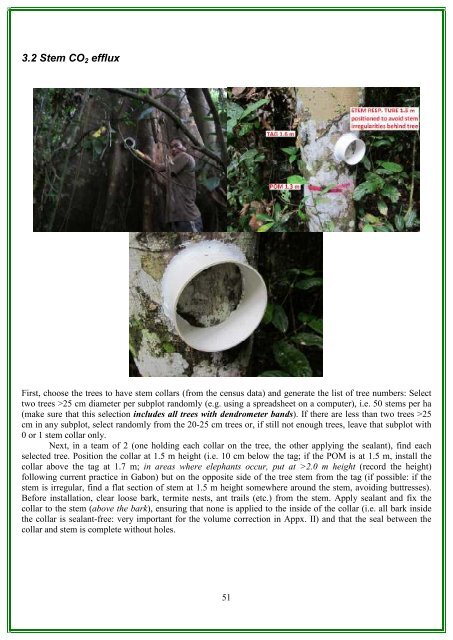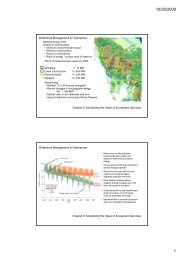RAINFOR GEM Intensive Plots Manual (pdf) - University of Oxford
RAINFOR GEM Intensive Plots Manual (pdf) - University of Oxford
RAINFOR GEM Intensive Plots Manual (pdf) - University of Oxford
- No tags were found...
You also want an ePaper? Increase the reach of your titles
YUMPU automatically turns print PDFs into web optimized ePapers that Google loves.
3.2 Stem CO 2 effluxFirst, choose the trees to have stem collars (from the census data) and generate the list <strong>of</strong> tree numbers: Selecttwo trees >25 cm diameter per subplot randomly (e.g. using a spreadsheet on a computer), i.e. 50 stems per ha(make sure that this selection includes all trees with dendrometer bands). If there are less than two trees >25cm in any subplot, select randomly from the 20-25 cm trees or, if still not enough trees, leave that subplot with0 or 1 stem collar only.Next, in a team <strong>of</strong> 2 (one holding each collar on the tree, the other applying the sealant), find eachselected tree. Position the collar at 1.5 m height (i.e. 10 cm below the tag; if the POM is at 1.5 m, install thecollar above the tag at 1.7 m; in areas where elephants occur, put at >2.0 m height (record the height)following current practice in Gabon) but on the opposite side <strong>of</strong> the tree stem from the tag (if possible: if thestem is irregular, find a flat section <strong>of</strong> stem at 1.5 m height somewhere around the stem, avoiding buttresses).Before installation, clear loose bark, termite nests, ant trails (etc.) from the stem. Apply sealant and fix thecollar to the stem (above the bark), ensuring that none is applied to the inside <strong>of</strong> the collar (i.e. all bark insidethe collar is sealant-free: very important for the volume correction in Appx. II) and that the seal between thecollar and stem is complete without holes.51





